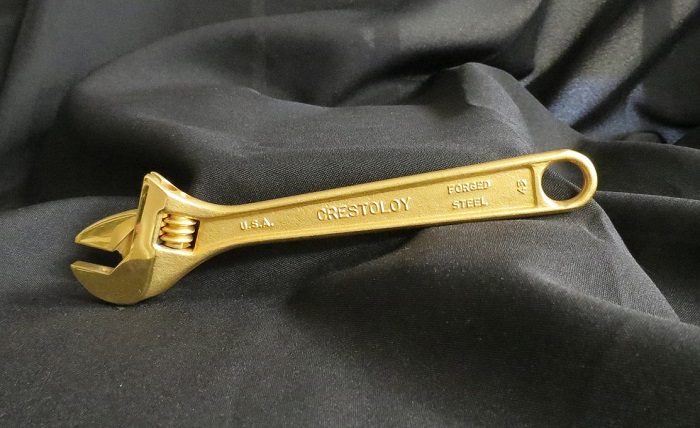The Indispensable Crescent Wrench: Your Guide to This Versatile Tool

The crescent wrench is a timeless classic, a mainstay in any toolbox for generations. Its simple yet effective design has made it a go-to tool for countless tasks, from tightening nuts and bolts to gripping pipes and turning stubborn fasteners. In this comprehensive blog post, we’ll delve deep into the world of crescent wrenches, exploring their history, types, uses, and maintenance tips. So, whether you’re a seasoned DIYer or a curious homeowner, get ready to tighten your grip on knowledge and discover the true potential of this trusty tool.
A Wrench Through Time: The History of the Crescent
The crescent wrench’s origins can be traced back to the mid-19th century, with several inventors vying for credit for its creation. One contender is Englishman Richard Silcock, who patented an adjustable wrench in 1843. However, it’s widely accepted that American inventor Daniel Rhodes is the true father of the modern crescent wrench. In 1877, he received a patent for his “Adjustable Screw-Wrench,” which featured the now-familiar sliding jaw mechanism that we know and love today.
Over the years, the crescent wrench has undergone various refinements and adaptations. Different manufacturers introduced their own variations, with the American Wrench Company’s “Bemis” wrench and the Swedish company Bahco’s adjustable spanners gaining widespread popularity. Today, countless brands offer crescent wrenches in an array of sizes and styles, catering to diverse needs and preferences.
Types of Crescent Wrenches: Finding the Right Fit for Your Job
Crescent wrenches come in a variety of shapes and sizes, each suited for specific tasks. Here’s a quick rundown of the most common types:
- Standard Crescent Wrench: This is the classic adjustable wrench, featuring a movable jaw that slides along a fixed jaw to accommodate different nut and bolt sizes.
- Combination Wrench: This wrench combines a crescent wrench on one end and a fixed-size wrench on the other, offering versatility for tackling various tasks.
- Pipe Wrench: Designed specifically for gripping and turning pipes, this wrench features serrated jaws that dig into the pipe surface for better grip.
- Monkey Wrench: Similar to a pipe wrench, this wrench has a wider jaw opening and a screw mechanism for adjusting the jaw size.
- Ratcheting Crescent Wrench: This innovative wrench incorporates a ratcheting mechanism that allows for tightening nuts and bolts with a back-and-forth motion, saving time and effort.
Crescent Wrench in Action: A Multitude of Uses
The crescent wrench’s versatility makes it a valuable tool for various tasks around the home, workshop, or job site. Here are just a few examples of how you can put your crescent wrench to good use:
- Furniture Assembly: Tightening nuts and bolts on furniture, from bed frames to bookshelves.
- Plumbing Repairs: Fixing leaky faucets, installing valves, and connecting pipes.
- Electrical Work: Securing electrical panels, tightening wire connectors, and adjusting light fixtures.
- Automotive Maintenance: Changing spark plugs, removing oil filters, and loosening lug nuts.
- DIY Projects: From building decks and fences to repairing bikes and lawnmowers, the crescent wrench is your trusty companion for countless projects.
Maintaining Your Crescent Wrench: Keeping It in Top Shape
Crescent wrenches are built to last, but proper care and maintenance can ensure they perform optimally for years to come. Here are some tips for keeping your wrench in top shape:
- Clean and lubricate regularly: Wipe down your wrench after use to remove dirt and grime. Apply a light coat of lubricant to the sliding jaw mechanism and pivot point to ensure smooth operation.
- Avoid overtightening: Don’t force the wrench beyond its capacity, as this can damage the jaws or strip the threads of nuts and bolts.
- Store properly: Keep your wrench in a dry, tool box to prevent rust and corrosion.
Conclusion: The Indispensable Crescent Wrench
The crescent wrench is more than just a tool; it’s a symbol of ingenuity, versatility, and reliability. Its simple design and wide range of applications have made it a staple in toolboxes around the world. Whether you’re a seasoned professional or a weekend warrior, the crescent wrench is a valuable asset that can help you tackle any task with confidence. So, the next time you reach for a tool, remember the trusty crescent wrench – it’s always there to lend a helping hand (or jaw!).




